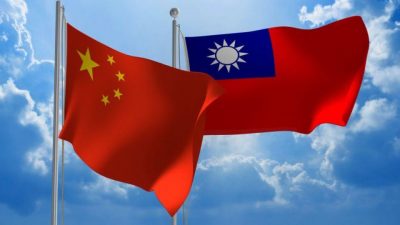China Ready to Make Efforts for ‘Peaceful Reunification’ with Taiwan

All Global Research articles can be read in 51 languages by activating the “Translate Website” drop down menu on the top banner of our home page (Desktop version).
To receive Global Research’s Daily Newsletter (selected articles), click here.
Follow us on Instagram and Twitter and subscribe to our Telegram Channel. Feel free to repost and share widely Global Research articles.
***
China has proposed a “one country, two systems” model for Taiwan, similar to the formula under which the former British colony of Hong Kong returned to Chinese rule in 1997.
China is willing to make the utmost effort to strive for a peaceful “reunification” with Taiwan, a Chinese government spokesperson has said, following weeks of military manoeuvres and war games by Beijing near the island.
Ma Xiaoguang, a spokesperson for China’s Taiwan Affairs Office, told a news conference in Beijing on Wednesday ahead of next month’s once-in-five-years Communist Party congress that China was willing to make the greatest efforts to achieve peaceful “reunification”.
“The motherland must be reunified and will inevitably be reunified,” Ma said. China’s determination to safeguard its territory is unwavering, he added.
China claims democratically governed Taiwan as its own territory. Taiwan’s government rejects China’s sovereignty claims and says only the island’s people can decide their future.
China has been carrying out drills near Taiwan since early last month, after US House Speaker Nancy Pelosi visited Taipei, including firing missiles into waters near the island.
‘One country, two systems’
China has proposed a “one country, two systems” model for Taiwan, similar to the formula under which the former British colony of Hong Kong returned to Chinese rule in 1997.
Ma said Taiwan could have a “social system different from the mainland” that ensured their way of life was respected, including religious freedoms, but that was “under the precondition of ensuring national sovereignty, security, and development interests”.
All mainstream Taiwanese political parties have rejected that proposal and it has almost no public support, according to opinion polls, especially after Beijing imposed a national security law on Hong Kong in 2020 after the city was rocked by sometimes violent anti-government and anti-China protests.
China has also never renounced the use of force to bring Taiwan under its control, and in 2005 passed a law giving the country the legal basis for military action against Taiwan if it secedes or seems about to.
US, Canadian warships sail through Taiwan Strait
Meanwhile, a US Navy warship and a Canadian frigate made a routine transit through the Taiwan Strait on Tuesday, the militaries of both nations said, at a time of heightened military tension between Beijing and Taipei.
The transit was the second in a month by a US Navy ship, and the second jointly by the United States and Canada in less than a year, since October 2021.
While China condemned the mission, saying its forces “warned” the ships, recent years have seen US warships, and occasionally those of allied nations such as Britain and Canada, routinely sail through the strait.
Canadian Defence Minister Anita Anand said that as a Pacific nation, her country was deeply committed to upholding global stability and prosperity in the Indo-Pacific region.
“Today’s routine Taiwan Strait transit demonstrates our commitment to a free, open and inclusive Indo-Pacific,” she said in a statement.
Taiwan’s foreign ministry welcomed the action.
“This operation though the Taiwan Strait is, even more, a concrete demonstration of the resolute opposition of democratic allies to China’s expansion attempts,” it said.
The Eastern Theatre Command of China’s People’s Liberation Army said its forces monitored the ships and “warned them”.
“Theatre forces are always on high alert, resolutely counter all threats and provocations, and resolutely defend national sovereignty and territorial integrity,” it said in a statement, employing its usual phrasing for such responses.
*
Note to readers: Please click the share buttons above or below. Follow us on Instagram and Twitter and subscribe to our Telegram Channel. Feel free to repost and share widely Global Research articles.
Featured image is from TRT World

